-
Posts
2,737 -
Joined
-
Last visited
-
Days Won
38
donkaye, MCFI last won the day on November 2
donkaye, MCFI had the most liked content!
About donkaye, MCFI
- Birthday December 29
Contact Methods
-
Website URL
http://www.donkaye.com
Profile Information
-
Gender
Male
-
Location
Santa Clara, California
-
Interests
Flying, Flight Instruction, Running, Clarinet
-
Reg #
N9148W
-
Model
M20M
-
Base
KSJC
Recent Profile Visitors
38,954 profile views
donkaye, MCFI's Achievements
-
Bottom line, an Acclaim is not an airplane that should be in a flight club, especially at an airport with a 2,400 foot runway and with transition instructors who are not Mooney Specific Instructors.
-
That is an understatement. The owner put it on the flight line at a flying club at Palo Alto. That turned out to be a bad idea. The field is 2,441 feet long. As an independent instructor I was the exception for doing transition training, as the club wanted their own instructors for checkouts. Robert wanted me only, but the club wouldn't acquiesce to that. That REALLY turned out to be a VERY bad idea. None were experienced in Mooneys. The plane had 3 prop strikes involving a teardown. None were my students. Robert was a conscientious pilot. I related a contrasting safety story about a flight he asked me to accompany him on. He was uncomfortable doing the flight on his own. The very same day another former student of mine who was not instrument current tried to go into an airport that was IFR and that even Clay Lacey that evening had diverted from to go to Modesto. On his 3rd attempt at a visual approach he became disoriented, crashed and killed both himself and his fiancé. I'm sorry Robert lost the plane.
-
Your airplane has a lot of history. I have 158 Hours in it including both ferrying and teaching from 2008 through 2015.
-
First off, after I had a problem renewing my subscription to Garmin Pilot last week, customer service informed me that they were no longer including the Premium Upgrade as a part of the OnePak. Disappointing, but not surprising. When Garmin does a System Update to the products that I have, they usually put out an Upgrade Supplement that I review. Usually I don't miss anything that can be useful to me, but this time I did. For those that have the G500 TXi and GTN X50 Xi and missed them here are a couple of items that might prove useful. 1. On the G500 TXi there is a toggle to see Density Altitude on the PFD instead of Temperature. Once in the air the toggle could be switched back to temperature. Of course if you have a G5 they added this data field when on the ground many software iterations ago. 2. On the GTNs when on the Flight Plan page, each waypoint can be configured to have 2 data fields per column instead of 1. 3. This is more for information, but on the Flight Plan Page for the GTNs, not only is the active waypoint magenta, but everything on the line including the Altitude Constraint is now magenta (the Altitude Constraint used to be Cyan). This was important to me because after updating my TXi System to 3.8 the update failed and I lost all of my configuration settings. (Note: that won't happen again because I downloaded the settings to an SD Card as I should have in the past). The next few times I flew I couldn't get VNAV to work. I thought I had done everything right; Set the VNAV altitude on the GTN, Preselected the lowest VNAV altitude, Enabled VNAV on the GFC 500. I thought somehow the Upgrades to the TXi and GTNs were still screwed up and that the Magenta Color on the active waypoint confirmed it. I had plenty of time to review the issue on our trip to San Diego for Thanksgiving. I hadn't given any thought to Navigation source, since I was navigating on GPS on the PFD. I was stumped until I looked at the navigation indicator on the GTN 750 Xi. As you might have guessed it was on VLOC. After switching it to GPS, VNAV became functional. My sources are not sync'd together and I am going to check with my avionics shop to find out why not. So if your VNAV is not working verify that the 4th required item, source is in GPS, is selected. Anyway, that's what led me to the new magenta coloring.
- 1 reply
-
- 1
-

-
I'm glad, Tim, you were happy with Norcal. I've had several students go there for their Annuals. However, I don't see how an Annual can be done in 2 days. I'm not sure about the J Model, but for the M model the book says 31 hours for the inspection alone, not including fixing the called out items.
-
Thanks, Lance, you are correct. He definitely has been questioning my competence, but I knew that from the beginning. Remember he was the one who upon getting his Bravo said it only took him a few times around the pattern to be making great landings. This from a pilot who says, "Low time VFR only pilot, so what the hell do I know". I engaged because I thought there might be some value to others in my answers. And then there's new member JackK, apparently a commercial pilot who appears not to even own a Mooney, maybe has never flown one, but apparently based on flying many other model airplanes, thinks he knows how to fly a Mooney. To him my approach to teaching is all wrong. My problem with him is that some people on this forum might actually believe what he says. As if I don't know that putting the gear down early requires higher engine power around the pattern. I do it for a number of reasons I've already discussed. And doing only power off approaches is ridiculous. You are not going to run a 3° slope power off. Descent rates are greater making learning how to flare more difficult. In my 58 years of flying GA in 57 different models of airplanes, I have found that if you have mastered the precision required to fly the Mooney well, it is reasonably easy to fly other types of airplanes, but the reverse is not true.
-
It's for both. The smart a** answer to the 2nd question is "You know it when you see it". The CFI answer is: A stabilized approach on final, on speed, on slope with the aim point remaining stationary, and with the flare started at a point such that with a constant increase in back pressure on the yoke the rate of descent goes to zero at touchdown with the main wheels rolling on with not even a squeak and enough energy remaining to control the lowering of the nose wheel after touchdown of the mains.
-
1. Not well. A different procedure is taught for the power off 180° for the Commercial. 2. Not if a student is training with me. 3. Agree if you're flying a jet. That's the speed I used to fly downwind in the Citation 525. No way for the average Mooney pilot. The procedure I discussed above is the best training procedure I have found to efficiently transition a pilot who hasn't flown a Mooney. Most of our brains are pretty smart at adapting over a period of time. After a significant number of hours in a particular type of airplane, a pilot can use his own experience to modify his flying. However, until that time, a good solid repetitive procedure will keep people safe. For example, I have over 11,000 hours flying Mooneys. I actually had a Controller at San Jose surprise me a couple of weeks ago by coming on frequency after I landed with a congratulations. He said they clocked me at 186 knots entering the downwind and were surprised I was able to slow the plane for landing. I know my plane's performance and know the rate at which I can comfortably slow it down. The absolute best complement I ever got, though, was a few years ago. I was out practicing touch and goes early in the morning at San Jose. Although a Class C airport, they are pretty cooperative when traffic is light. I was minding my own business doing my normal practicing on the left runway with all different types of approaches including a very short approach involving a turn onto final and touchdown right after the rollout. I had no idea that anyone was watching. As I was on downwind on the next circuit, a Southwest Airlines pilot who apparently had been awaiting his takeoff clearance for some time was cleared for takeoff on the right runway. As he powered up, he came on frequency and said, "Thanks for the show". I didn't say anything, but he made my day.
-
A pilot with many thousands of hours can adapt as they see fit. Believe it or not, though, many airline pilots I've transitioned into their new to them Mooney, had much to learn when it came to proficiently flying a Mooney.
-
Unless I am misunderstanding the question, a VFR Circuit approach and landing is the same as doing a pattern here in the US. Regarding an IFR approach, things are a little different with the variety of situations, and the complexity of that is better discussed with your flight instructor. Referenced to the Ovation, Bravo, and Acclaim.
-
When doing pattern work with full stop landings: 1. Take off with approach flaps. Apply about 5 pounds of back pressure on the yoke. (Bob Krommer's "The Mooney Pull". The plane will fly off the ground when it's ready to fly. 2. In the crosswind and 100 feet below pattern altitude put the gear down. This applies the "brakes" to keep the plane from accelerating once at pattern altitude. 3. Reduce power to maintain 90 knots on downwind (Gear and Approach Flaps). By putting the gear down first before power reduction saves having to do an additional power change to maintain speed had the power been reduce first. 90 knots is a comfortable speed to maintain an appropriate distance from the runway on downwind. Without putting the gear down first a very low power setting would be required to maintain a speed below flap speed below 110 knots. Also, using this speed keeps the airplane from getting ahead of the pilot and provides for easy transition to base leg. 4. At 3° from the aim point reduce power to about 12" nominally, turn base while trimming up and adding full flaps simultaneously. By setting the nose of the airplane at 3° down the addition of the flaps will automatically cause the plane to slow to 80 knots thereby simplifying pilot workload. 5. Turn final early enough to keep the bank angle at standard rate and adjust power to main 75 knots nominally at mid-weight. Control speed with elevator and altitude with power. This is antithetical to the Jacobson Flare method. Behind the power curve it is safer to do so because pitch provides an immediate response, while power provides a delayed response. While I appreciate Jacobson's attempt to mechanically fly the airplane to a landing, even though some may use it successfully, there is a reason it has not caught on in the 40 years he has been advocating for it. Even using his method there is still an art to his last 4 seconds to flare at the proper rate to touch down with the proper amount of energy remaining. The rate of simultaneous power reduction and flare is basically the same as taught conventionally. The bottom line to "Why not reduce power to slow down and then only add gear and flaps app when commencing the final descent for landing on downwind?" is to maintain a consistent and simplistic approach to landing without letting the airplane "get ahead" of the pilot.
-
I don't. I recognize that flying slowly means different control pressures, but I just smoothly use whatever control "Pressures" are required without thinking about any difference in "feel". Nor does that matter. Just do what it takes using whatever control "Pressures" are necessary, not using abrupt jerky movements I see so many people exhibit in the beginning of my training with them.
-
It's good to practice slow flight. That's one of the reasons it is part of a Wings Program Activity that I use: A070405-08. Having said that, a good landing requires the correct airspeed for the weight AND proper slope management. If you come in flat at 2° or less to your aim point, you are not going to have consistent good landings. There's not enough flare angle for the transition to the landing attitude.. If you come in at 4° or greater, the flare rate is too great to smoothly control the flare without possibly ballooning. The aim point should not move during the approach. Once you have the 3° site picture imprinted in your mind, combined with the proper approach speed, every landing should be a masterpiece. The proficient pilot feels comfortable flying through the complete dynamic range of the airplane. If you don't, then go up and fly the dynamic range until you do feel comfortable. You, your passengers, and your insurance company will appreciate it.
-

Rght out of the gate? Seriously???
donkaye, MCFI replied to Freddb34's topic in Vintage Mooneys (pre-J models)
Having seen the results of bent blades when a prop is not turning and comparing the picture to that of the accident airplane's prop, the pictures look similar. I've also seen pictures of props after gear up landings when the prop had been spinning. They have curled blade tips. Therefore, it appears to me that the prop wasn't spinning in the accident airplane implying the engine wasn't running. Awaiting the results of the NTSB investigation... -

Rght out of the gate? Seriously???
donkaye, MCFI replied to Freddb34's topic in Vintage Mooneys (pre-J models)
Still: Impulsivitity and Invulnerability. "New" to him airplane, previous issue, marginal weather ==> Don't Fly


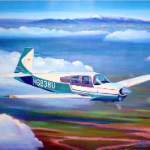
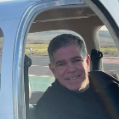
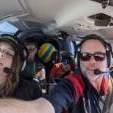

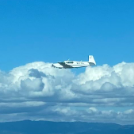
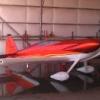
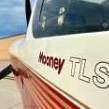
.thumb.jpg.e77cc1366b726120b8718d36b3241f8a.jpg)


